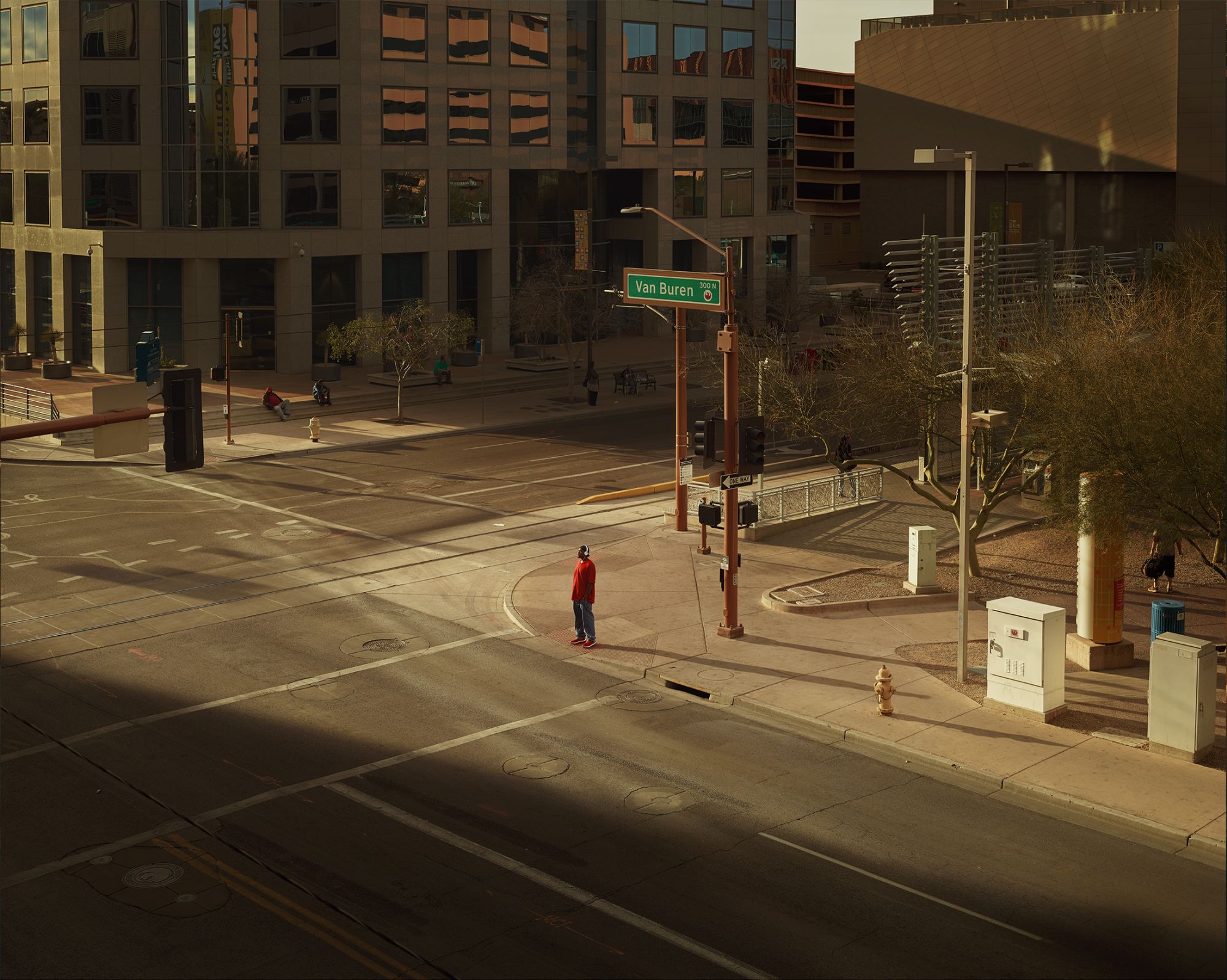According to the legend, American blues singer Robert Johnson sold his soul to the devil at a crossroads, in exchange for otherworldly musical talent. Acclaimed as one of the greatest guitarists of all time, Johnson died aged 27 in 1938, less than one year after releasing possibly his most famous song, “Cross Road Blues.”
The song’s lyrics have been dissected for decades for Faustian clues. More recently, it inspired the title of a photography series by British photographer Oli Kellett. “The story of Robert Johnson selling his soul at a crossroads inspired me from the start,” Kellett said in a phone interview.
There’s no suggestion that strangers are doing deals with the devil at the crossroads in Kellett’s photographs. In fact, he knows very little about any of the people in his images.
“I think about the people in the pictures an awful lot. What are their lives, what are their aspirations, where they come from, where they’re going? They don’t even know I’m taking a picture of them, but I am making up these narratives,” he said.
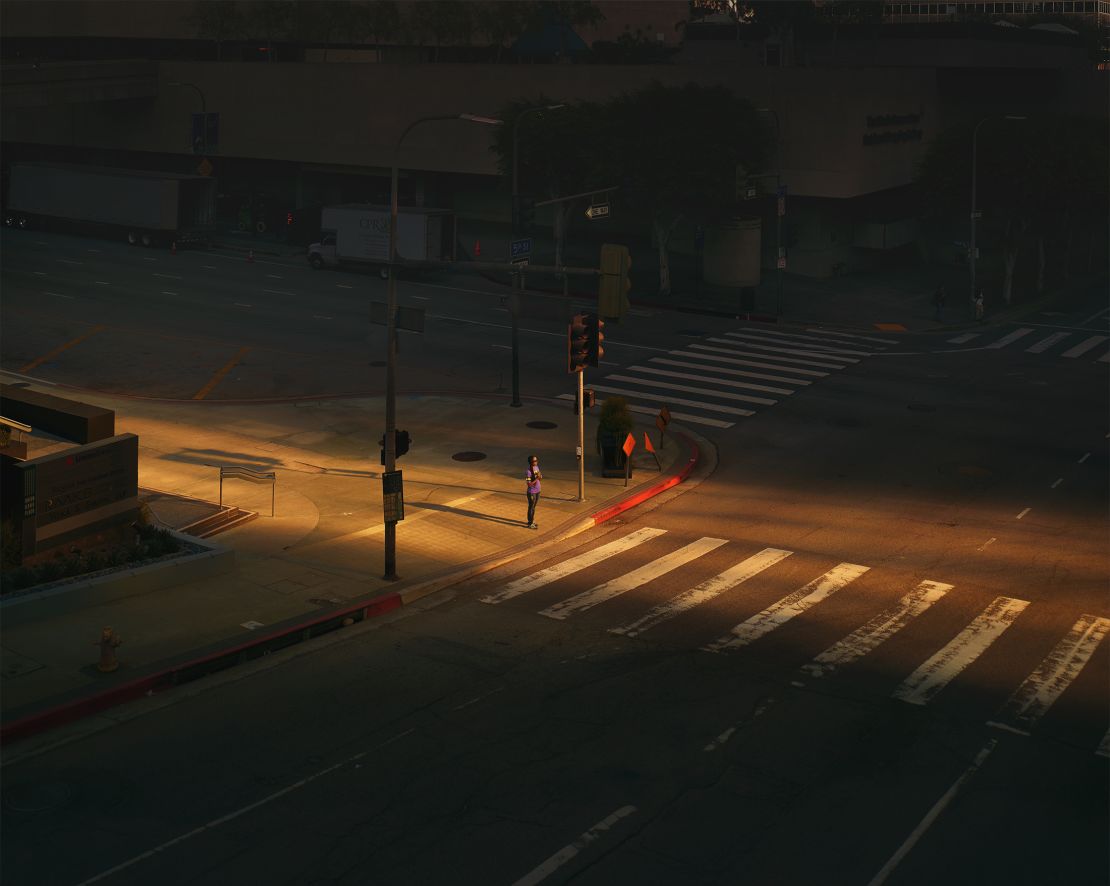
His first photo in the series is of a woman standing at an intersection on LA’s Figueroa Street a week before the 2016 US presidential election. The moment wasn’t planned, but it made him think: “She was almost looking for some kind of guidance,” he said.
The metaphor was clear to him. The image of the woman standing at the junction, a week before election day was “like the country being at a crossroads and looking in different directions.”
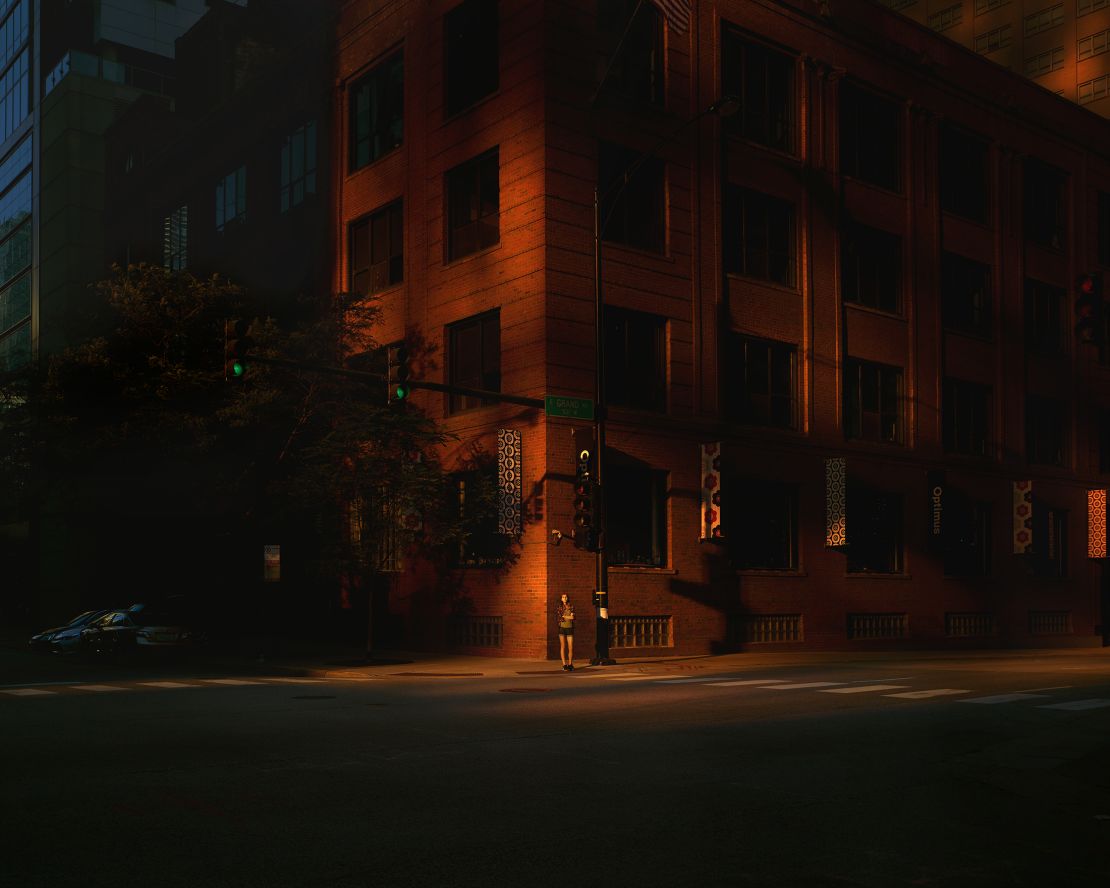
After that shot, Kellett started making trips to various US cities, 10 days at a time, to take pictures of people at urban intersections.
Although the images have a very theatrical, painting-like composition, Kellett say they are not staged and only natural light is used. “I quite enjoy the process of trying to get it right. I like the thrill of the chase in photography. Trying to get it as good as possible, without relying on things like Photoshop,” he said.
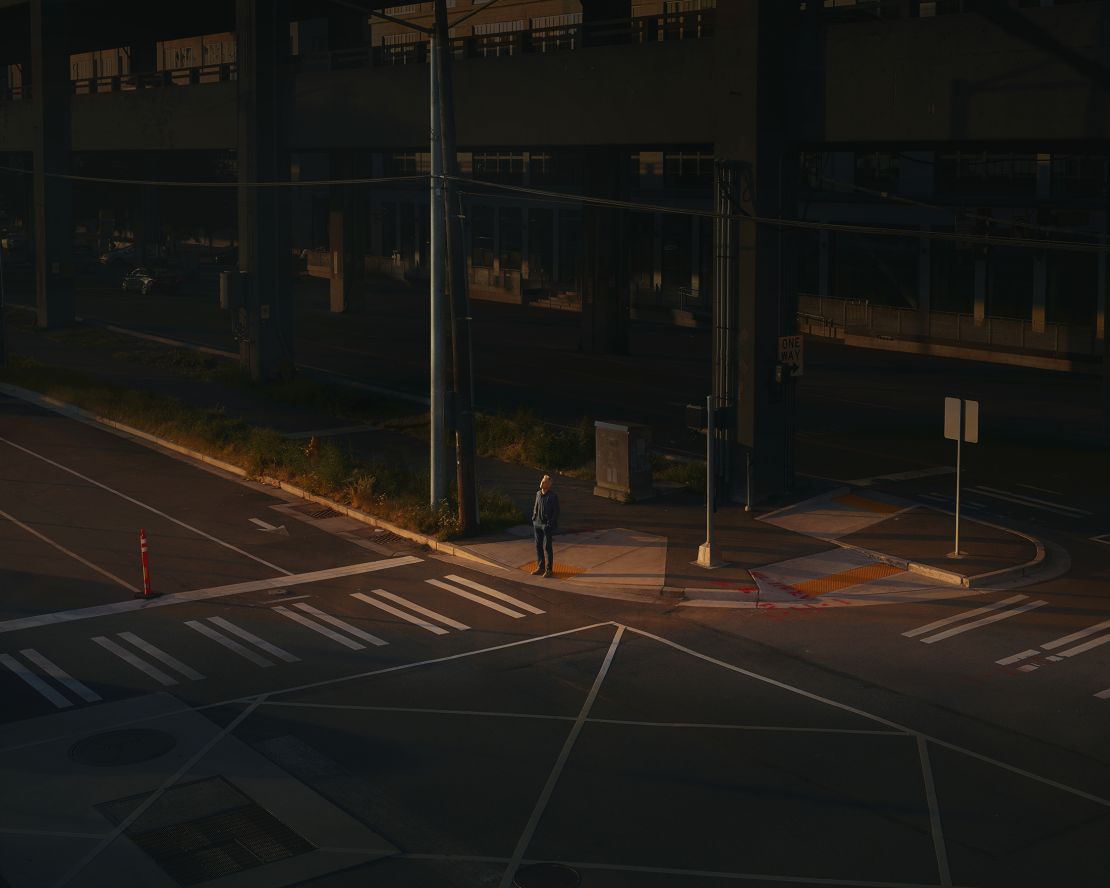
These shots require patience. “I set up and I wait,” said Kellett. “I spend many hours walking and waiting. I wait for the lights. I walk all day and then I kind of wait for the right people to show up. I’m looking for a specific kind of posture. Somebody who is kind of psychologically removed from the physical space and perhaps a little bit lost, kind of meditative.”
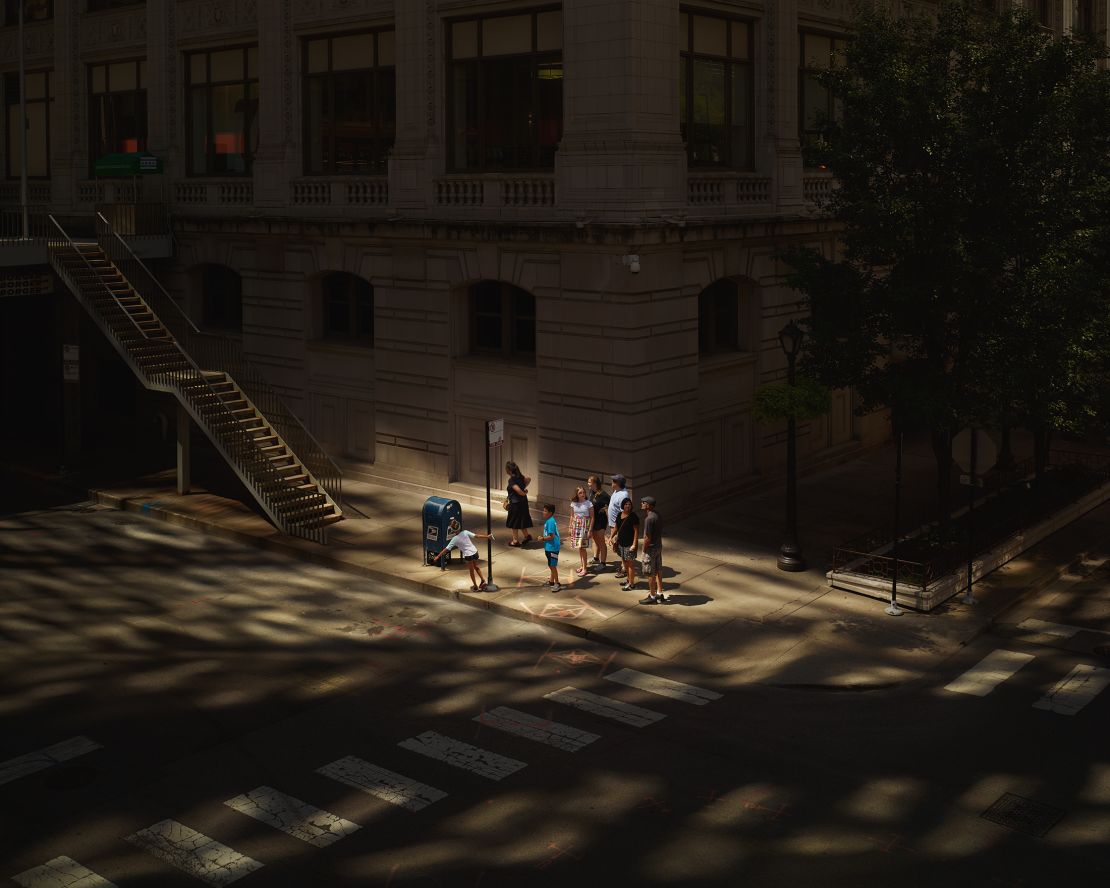
Solitary, pensive passersby make up the bulk of the subjects, but some images have larger groups of people, such as one depicting a seemingly carefree family, perhaps on holiday, in Chicago’s Hubbard Street.
“I’m looking for the universal in the everyday,” Kellett said. “This is a universal moment: kids are looking bored, mom and dad are just deciding which way to go next. It feels like every time you went to the city as a kid with your mom or dad. It’s a real moment.”
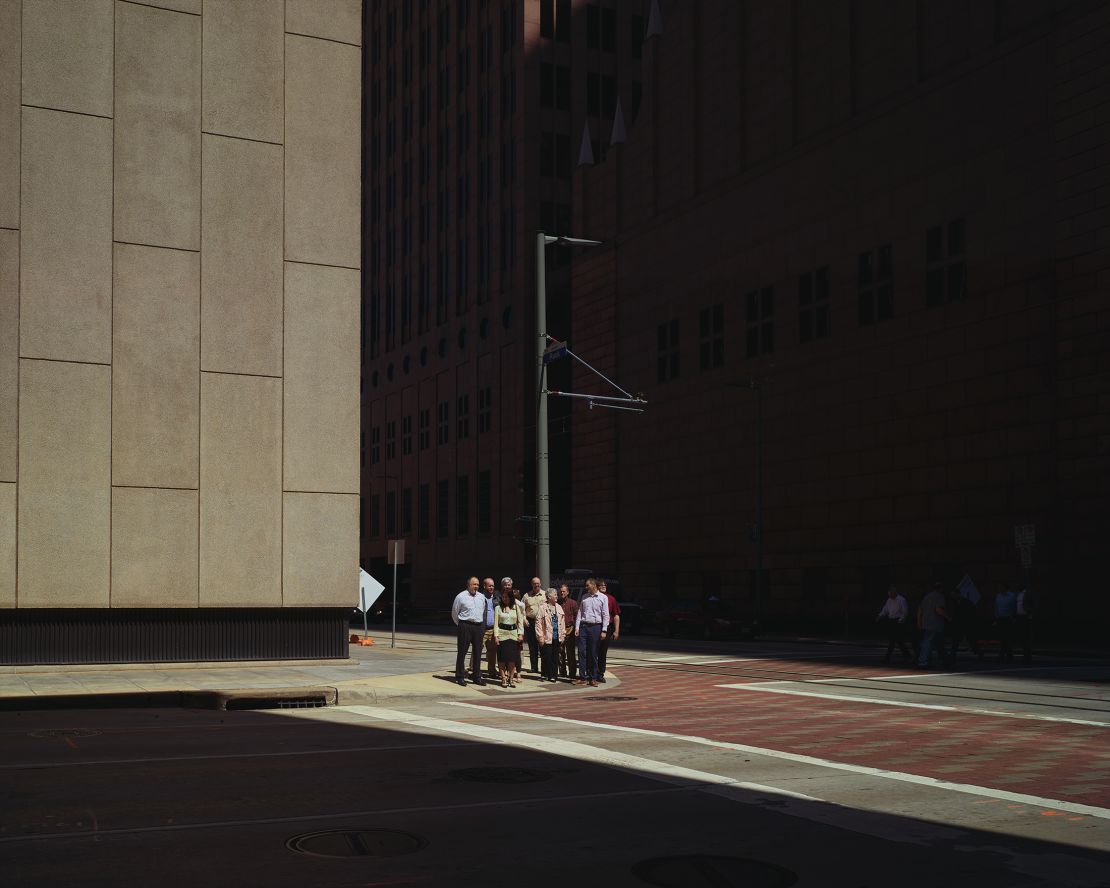
Kellett uses a modern large format camera, commonly used in architectural photography because it helps to preserve the geometry of buildings. “It has the same movements as a traditional camera, one that you would you use with a black cloth over your head, but it’s a digital version of one. Everything is manual about it, it’s quite a slow process,” he said.
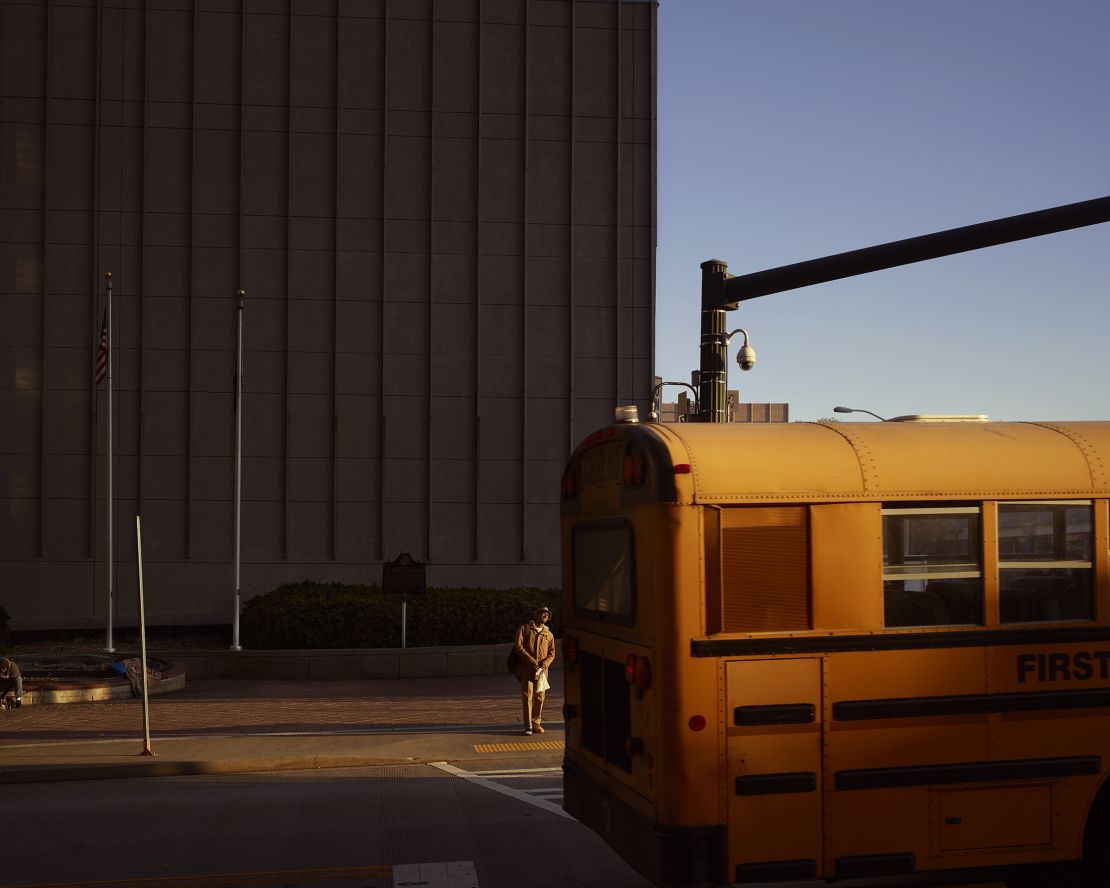
The photographs are mostly taken at street level, but sometimes Kellett climbs up to a car park, a walkway or a staircase.
He is always unseen by his subjects and does not warn them that he has taken their picture (it is not illegal to photograph people in public places in most countries, including the US).
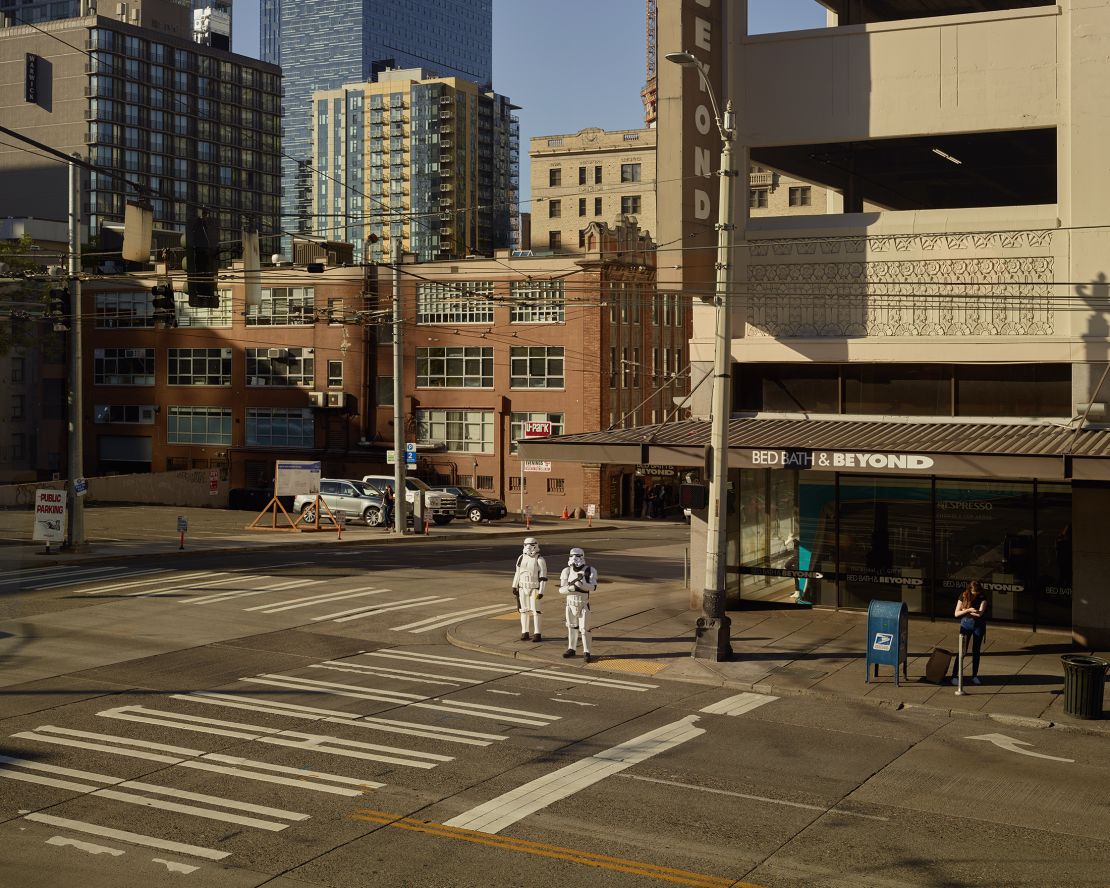
Kellett says he plans to expand the series to other countries and has already spent hours waiting at crossroads in Japan, Mexico and Brazil for the perfect composition.
But he’s not interested in showing recognizable landmarks or even recognizable cities, which is perhaps why New York is conspicuously absent from the current batch of shots. “It’s all about the people. The wider urban landscape that they’re in could almost be anywhere,” he said.
“The project is growing into something that’s more like an index of people. A framework to watch and compare people from all parts of the world.”

